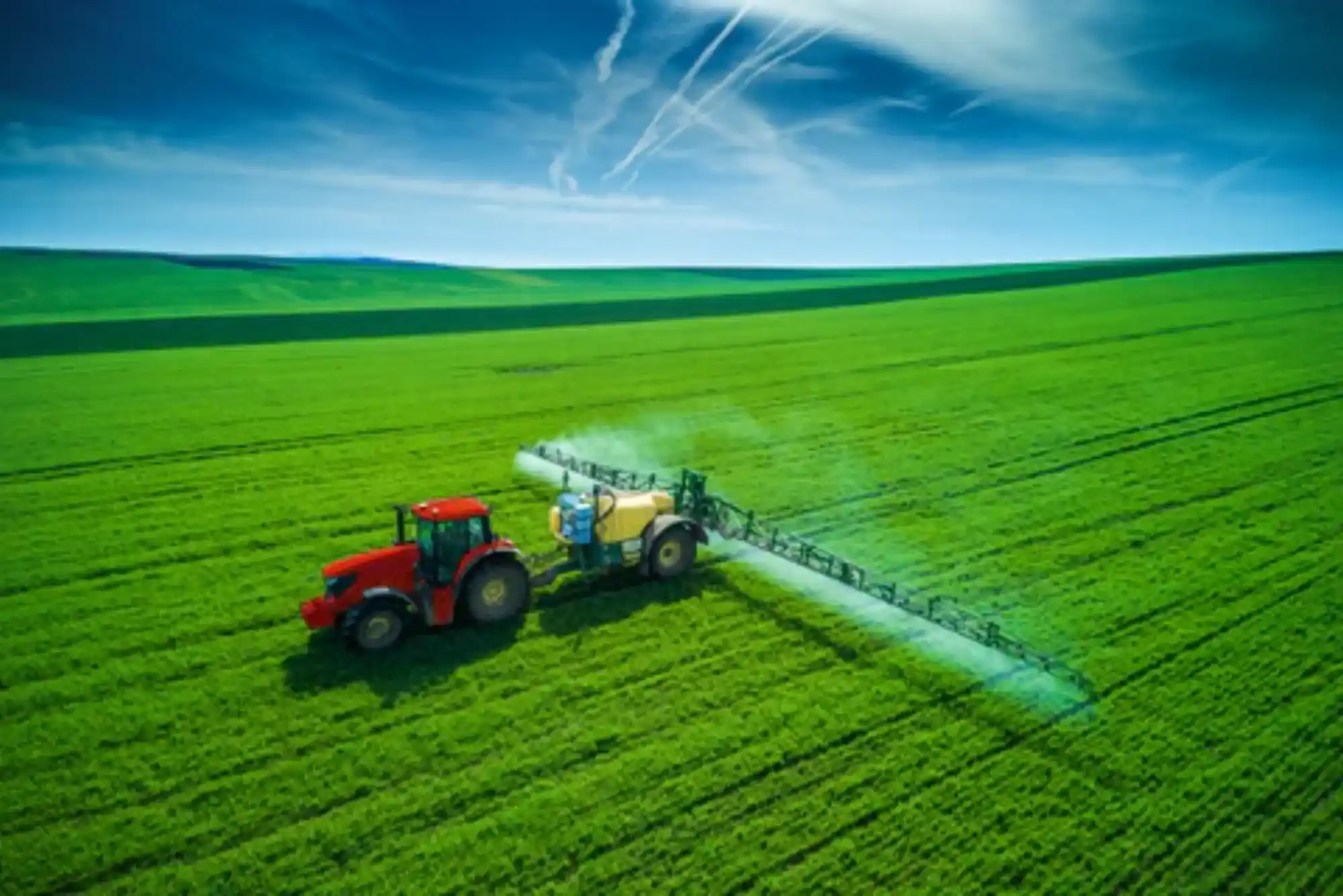Modern agriculture is undergoing a digital transformation. From soil testing to harvest planning, precision farming tools are helping farmers predict, plan, and profit more efficiently. One of the most important digital tools for farmers and agronomists is the crop yield estimation calculator, which helps estimate output based on field conditions, seed type, and weather data.
Platforms like Needscalculator.com have emerged as reliable sources for farmers, agronomists, and researchers looking for accurate agriculture crop yield calculators. In this article, we’ll explore and compare the top crop yield calculators, analyze their features, and explain how digital innovation is shaping the future of agriculture—especially in regions like Pakistan, India, and Southeast Asia, where tech-led farming is on the rise.
What Is a Crop Yield Calculator
Quick Answer: A crop yield calculator estimates the total production per acre or hectare using data such as plant population, kernel weight, and harvested area.
A crop yield calculator is an essential digital tool that helps farmers forecast their expected yield before harvest. These calculators analyze:
Number of plants per unit area
Grains or fruits per plant
Average weight per unit
Land area harvested
For example, a wheat farmer in Punjab, Pakistan, can input kernel count and moisture data to predict whether they’ll achieve the expected 4,000–4,500 kg/ha yield, which helps in budgeting and logistics.
Why Crop Yield Estimation Matters
Quick Answer: Yield estimation allows smarter decision-making, reduces waste, and ensures optimal resource use.
Knowing how much a farm will produce helps with:
Efficient resource allocation
Fertilizer and water planning
Market price prediction
Supply chain management
In developing nations, government agricultural boards like the Pakistan Agricultural Research Council (PARC) use yield calculators in pilot programs to forecast production and manage grain storage systems.
Top Crop Yield Estimation Calculators Compared
Quick Answer: Tools vary by accuracy, ease of use, and data integration.
Here’s a detailed comparison of some top-performing calculators available globally and regionally:
| Calculator | Region/Platform | Best For | Key Features |
|---|---|---|---|
| Needscalculator Crop Yield Estimator | Global (Focus: Asia & Africa) | Farmers, Students | Simple input interface, local units, adaptable for multiple crops |
| USDA CropScape | USA | Researchers, Analysts | Satellite mapping, county-level data |
| Agremo Yield Prediction Tool | Global | Agronomists | Drone-based field analytics |
| CropX Farm Intelligence | Israel / Global | Large Farms | Soil data + irrigation optimization |
| FarmLogs Yield Forecast | USA, Canada | Farm Owners | Historical trend analysis |
Among these, the crop yield estimation calculator from Needscalculator stands out for its multi-crop flexibility, region-based customization, and mobile accessibility, making it an ideal tool for small to medium farmers in South Asia.
How to Use a Crop Yield Estimation Calculator
Quick Answer: Gather key data, enter it in the calculator, and interpret results to guide field management.
Follow these simple steps:
Select Crop Type – Choose corn, wheat, rice, or any other crop.
Input Field Data – Plant density, grains per head, average grain weight, etc.
Enter Land Area – In hectares or acres.
Click Estimate – The tool generates expected yield per unit area.
Tip: Use consistent sampling across multiple fields for better accuracy.
Benefits of Using Free Online Calculators for Everyday Use
Quick Answer: Free online calculators simplify decision-making in farming, budgeting, and engineering.
Digital calculators—like those on free online calculators for everyday use—go beyond agriculture. Farmers and students use them for:
Area and volume calculations
Fertilizer ratio computations
Temperature and moisture conversions
Daily financial management
In a tech-driven farming ecosystem, these free tools support digital literacy, especially among youth learning data-based farming practices in Sindh, Punjab, and Balochistan.
Role of AI and Data Analytics in Modern Crop Estimation
Quick Answer: Artificial intelligence enhances prediction accuracy through pattern recognition and satellite data analysis.
AI-powered systems integrate satellite imagery, drone visuals, and field sensors to create real-time yield forecasts.
Example: In India’s Maharashtra region, startups use machine learning algorithms to detect crop stress before harvest—boosting yields by up to 12%.
As per a FAO 2024 report, AI-driven tools are now used in over 45% of large farms globally for early yield forecasting and disease detection.
Government & Youth Initiatives Supporting AgriTech
Quick Answer: Many countries, including Pakistan, promote digital agriculture through public-private programs.
Key examples include:
Digital Dera Program (Pakistan): Training rural youth in tech-based farming and digital tools.
PM Kisan Digital Mission (India): Offering e-farming platforms and yield prediction systems.
AgriTech Hub (Nigeria): Empowering startups to develop local calculators and weather tools.
These initiatives align with Pakistan’s emergence as the fastest growing IT company in Pakistan region, where tech innovation meets agricultural development.
How Accurate Are These Tools?
Quick Answer: Accuracy depends on input data quality, sampling method, and environmental variation.
Most calculators achieve 85–95% accuracy if:
Input data is precise and localized.
Weather variation is minimal.
Sampling follows standardized methods.
For example, combining field-based yield calculators with satellite monitoring systems can improve prediction accuracy by up to 15%.
Future of Crop Yield Estimation
Quick Answer: The future involves automation, IoT, and blockchain-based tracking.
By 2030, digital yield estimation will be part of smart farming ecosystems, integrating:
IoT sensors in soil and irrigation systems
Blockchain records for transparent produce tracking
AI models predicting weather impact on yields
Emerging agri-startups in Lahore IT clusters and Dhanote IT Park are already building tools that merge these technologies for farmers.
FAQs
1. What is the main purpose of a crop yield calculator?
It helps farmers predict their harvest, plan resources, and estimate profits before the season ends.
2. Are online calculators accurate for all crops?
Yes, most support multi-crop inputs like corn, rice, and wheat, though results depend on accurate field data.
3. Can small farmers use digital yield tools?
Absolutely. Platforms like Needscalculator are built for mobile access and regional units (acres, kanals, hectares).
4. How do weather changes affect yield estimates?
Unpredictable rain or drought can change yield by up to 20%, so regular recalculation is recommended.
5. Is there government support for AgriTech in Pakistan?
Yes, the Digital Dera and Punjab Agri Extension programs promote data-driven farming among young farmers.
6. How does AI improve yield prediction?
AI analyzes patterns from satellite and drone data to enhance accuracy and detect stress earlier.
7. What’s the best free tool for daily agri-calculations?
Needscalculator.com offers a wide range of free online calculators for everyday use including agriculture, finance, and construction.
Final Thought
As a writer closely observing the intersection of technology and agriculture in South Asia, I’ve seen how digital tools empower rural communities. Yield calculators are no longer just data-entry forms—they are decision-making partners.
In Pakistan, the collaboration between agri departments and IT innovators, especially those working in tech hubs like Dhanote IT Park, is redefining the future of sustainable farming.
By combining Regional Expertise, modern analytics, and government support, farmers can now harvest both data and success.




